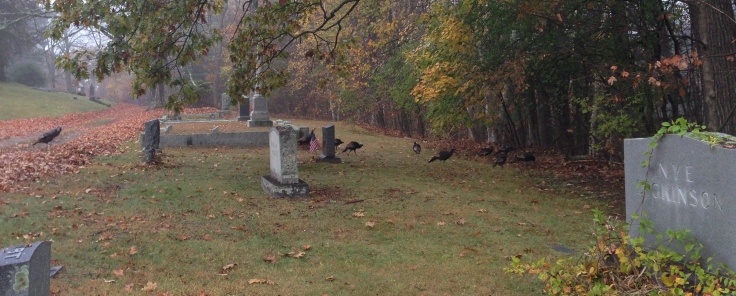 Halloween does not thrill me beyond a smiling Jack-O-Lantern and a Butterfinger. The Shining still gives me nightmares after 30 years and my heart aches with empathy at the sound of Charlie Brown saying “I got a rock.” If I never see or hear of another zombie or vampire again it will be just fine with me. But I love cemeteries and I visit them all the time.
Halloween does not thrill me beyond a smiling Jack-O-Lantern and a Butterfinger. The Shining still gives me nightmares after 30 years and my heart aches with empathy at the sound of Charlie Brown saying “I got a rock.” If I never see or hear of another zombie or vampire again it will be just fine with me. But I love cemeteries and I visit them all the time.
Growing up, we used to go to the cemetery with our Dad to visit the family plot. A beautiful spot overlooking the Cedar River, Greenwood Cemetery in Cedar Falls, Iowa, hasn’t even a whiff of Halloween spookiness to it, at least not for me. It is twentieth century tidy: groomed, pretty linear with elegant but largely unremarkable gravestones, and those fabulous old growth trees that are probably the real reason I love all cemeteries so much. The trees stand like guardian angels. Under their branches is a sanctuary for the living among the dead.
So today is Halloween and earlier this week a blanket of fog curled around our old New England cemetery and this one is made to order for All Hallows Eve. Thus, I am compelled to chronicle my early morning walk among the long departed.
The morning sun, masquerading as a rising moon, kisses the tops of an 18th century family plot. When I see stones like this so identical and lines up so perfectly I always wonder who designed it and whether they ordered them made all at once. My great grandfather was an undertaker back in Newton, Iowa, but I am woefully uneducated about cemetery protocol. I see research in my future.
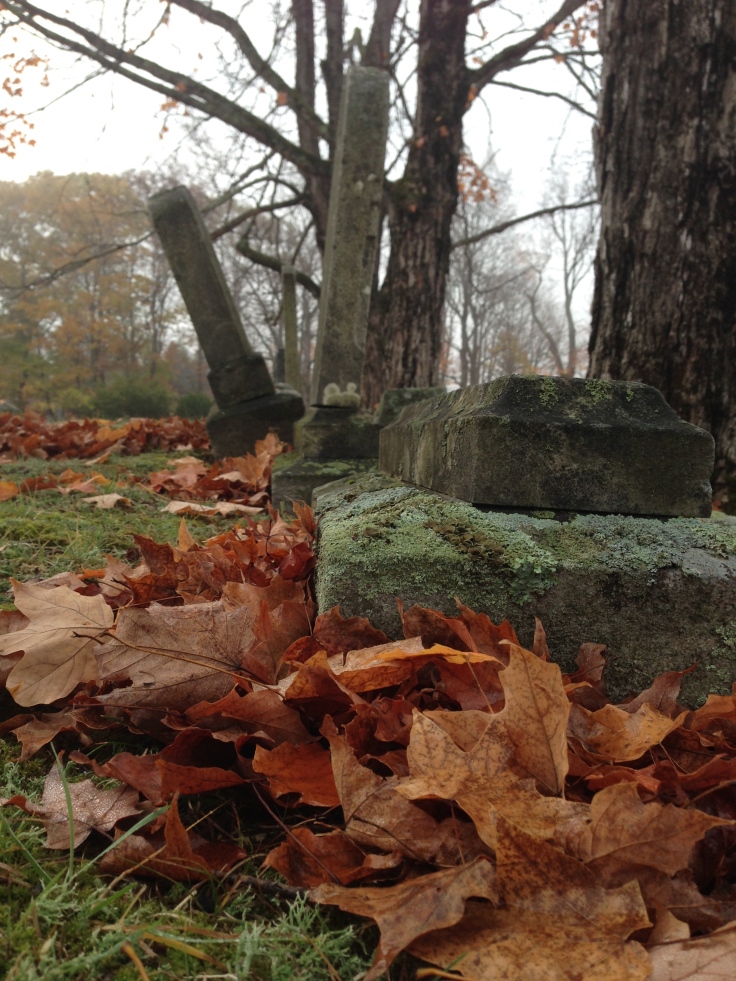 This family’s plot didn’t account for nearby trees upsetting their row of markers – not only are they out of line, one grave has only the base left. And this causes me to think that, in the digital age, for some people it’s entirely possible that markers such as these might be the only tangible thing we leave behind.
This family’s plot didn’t account for nearby trees upsetting their row of markers – not only are they out of line, one grave has only the base left. And this causes me to think that, in the digital age, for some people it’s entirely possible that markers such as these might be the only tangible thing we leave behind.
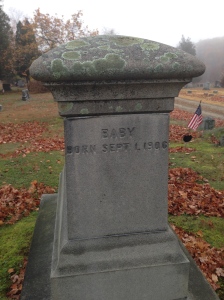 And then I look up and see that this baby, gone for over 100 years now, is no known to me because I walked by on this day. I am always touched by the nameless children who are so lovingly remembered by their families. Some people – okay, a lot of people – think it’s morbid to visit and speculate in this way but I am intrigued comforted by the directness with which previous generations faced and commemorated death. These days it seems like people will do anything to avoid acknowledging the inevitable. I am grateful for the people in my life – yes, Irish – who are unflinching and (sometimes) celebratory in facing death. I don’t always share the revelry but I deeply appreciate the sentiment and faith that unpin it.
And then I look up and see that this baby, gone for over 100 years now, is no known to me because I walked by on this day. I am always touched by the nameless children who are so lovingly remembered by their families. Some people – okay, a lot of people – think it’s morbid to visit and speculate in this way but I am intrigued comforted by the directness with which previous generations faced and commemorated death. These days it seems like people will do anything to avoid acknowledging the inevitable. I am grateful for the people in my life – yes, Irish – who are unflinching and (sometimes) celebratory in facing death. I don’t always share the revelry but I deeply appreciate the sentiment and faith that unpin it.
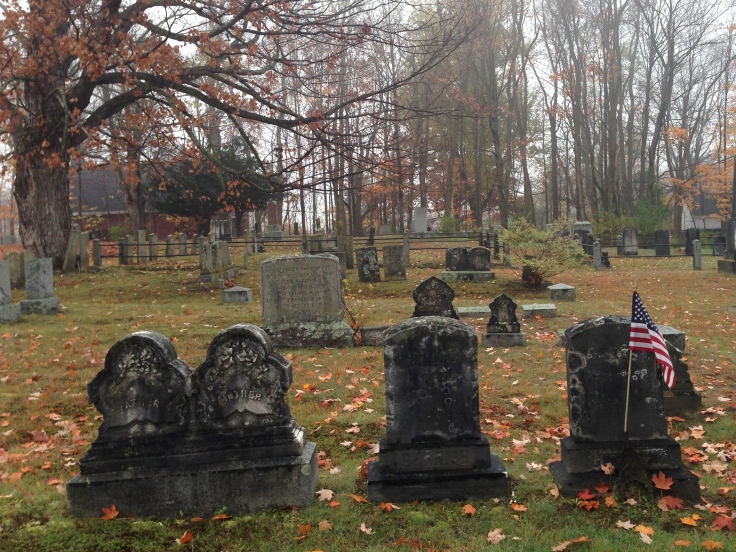 Above, conjoined on the left if you can see it, is something you don’t encounter as often in more modern cemeteries: the roles take precedence over the names. We know that mother and father rest here, but their given names are long obscured by time and weather. It’s also often true that the flags of soldiers are affixed to the telltale star-shaped holders but the names are no longer legible: all we know is that they served.
Above, conjoined on the left if you can see it, is something you don’t encounter as often in more modern cemeteries: the roles take precedence over the names. We know that mother and father rest here, but their given names are long obscured by time and weather. It’s also often true that the flags of soldiers are affixed to the telltale star-shaped holders but the names are no longer legible: all we know is that they served.
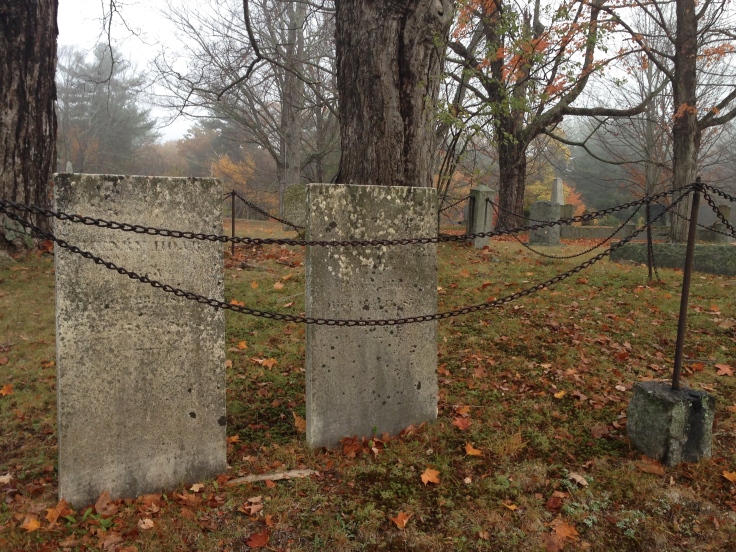 And then there are the various lines of demarcation between family plots. Chains certainly send an interesting message from the hereafter; there will be no fraternizing with others ghosts for these folks. I would love to eavesdrop on the conversations and circumstances that led to the placement of these chains. There’s a story here for sure.
And then there are the various lines of demarcation between family plots. Chains certainly send an interesting message from the hereafter; there will be no fraternizing with others ghosts for these folks. I would love to eavesdrop on the conversations and circumstances that led to the placement of these chains. There’s a story here for sure.
I always mean to look up the science behind the stone itself – why is it that Martha Pierce’s 1848 stone is so legible while others that are centuries newer have been wiped clean by the elements? I love everything about this – the color, the use of type, the spacing, even the weathering, it’s all perfect.
Space is at a premium in the oldest cemeteries (though this town has one that is even older than this, aptly named The Old Burying Ground), and some folks bought space near the storage house. It all adds to the charm, and probably the politics, too.
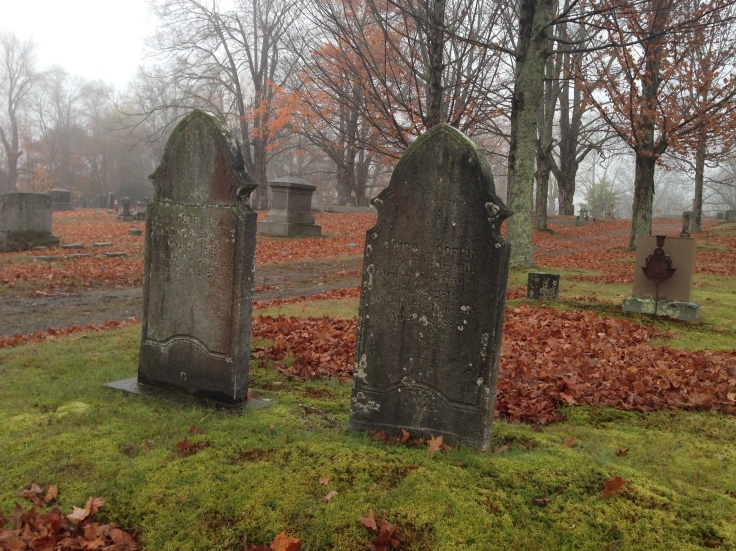 Finally, there are the colors – the leaves and mosses and vines – and how they complement and define the incredible shapes that show the styles and workmanship of centuries. Modern public spaces value uniformity but history is random and people are finicky even in death (or maybe especially in death). They had one more chance to make their mark, and most of them made it count.
Finally, there are the colors – the leaves and mosses and vines – and how they complement and define the incredible shapes that show the styles and workmanship of centuries. Modern public spaces value uniformity but history is random and people are finicky even in death (or maybe especially in death). They had one more chance to make their mark, and most of them made it count.
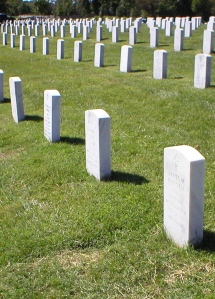 Our parents are buried in a National Cemetery in the Midwest and when I visit, the rows of white stones take my breath away with their undulating precision. But then, for a moment, I’m not sure I’m even in the right section and we are lost to each other until I can make their names out and know that I am in the right place after all. There is comfort in knowing their engravings won’t be wiped away and that the whole area will be well-tended, but it makes me all the more determined to remember them in other ways. I am reminded as I look through the photographs that “mother” and “grandmother” are engraved under Mom’s name – I had forgotten that.
Our parents are buried in a National Cemetery in the Midwest and when I visit, the rows of white stones take my breath away with their undulating precision. But then, for a moment, I’m not sure I’m even in the right section and we are lost to each other until I can make their names out and know that I am in the right place after all. There is comfort in knowing their engravings won’t be wiped away and that the whole area will be well-tended, but it makes me all the more determined to remember them in other ways. I am reminded as I look through the photographs that “mother” and “grandmother” are engraved under Mom’s name – I had forgotten that.
I am too far away to make the weekly pilgrimages my father made to his family and I wish now I knew what he was thinking on those days when we looked down at the river, but I know that even though I am walking among strangers, they are both with me (and laughing).

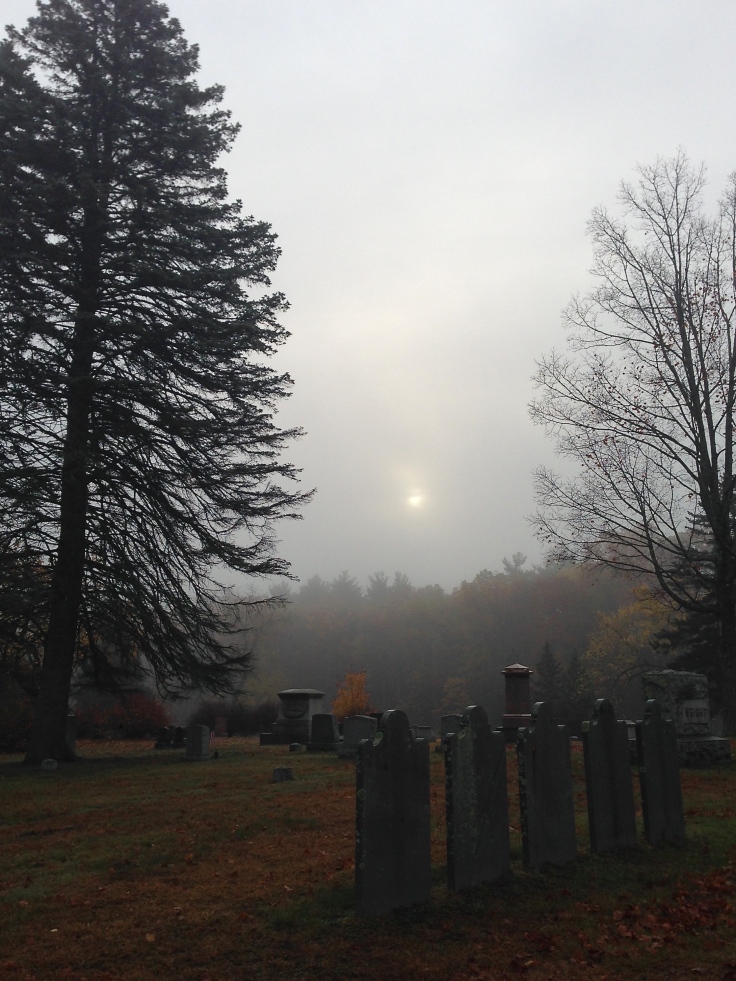
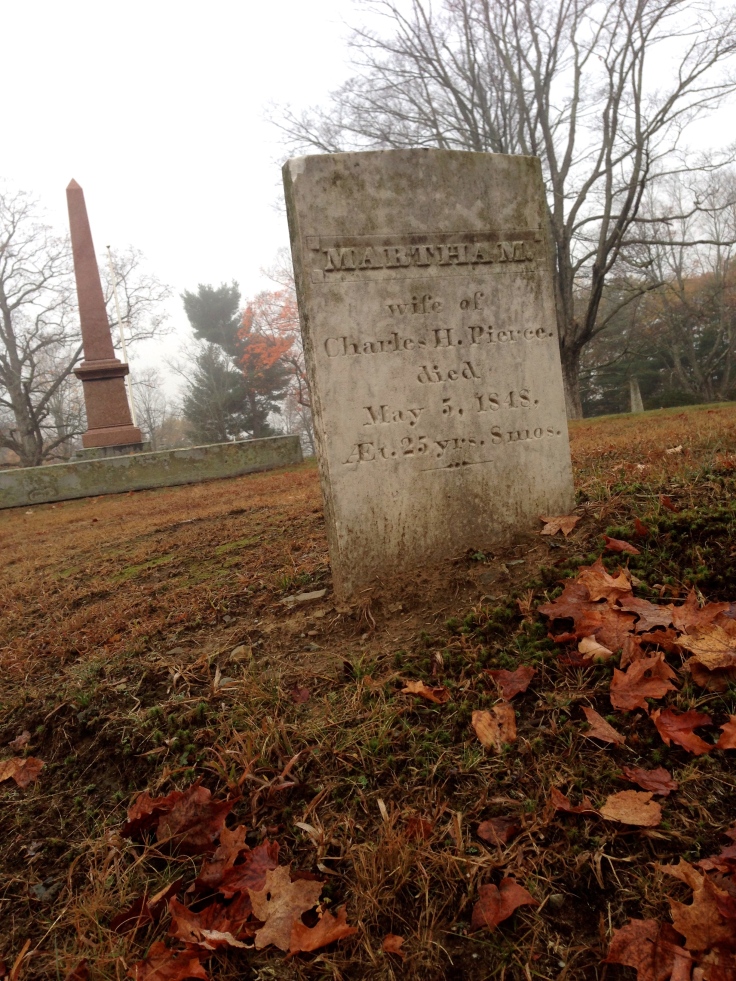
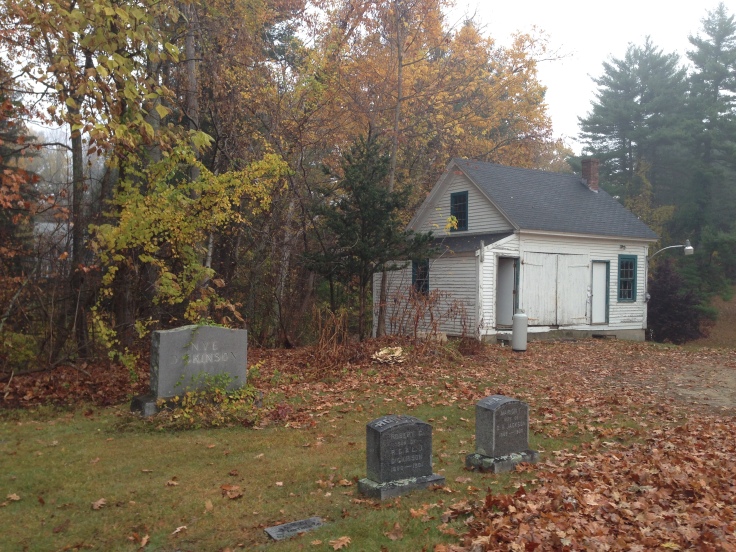
Hi Sarah, Lovely photos! I’m in the same boat with you. Yesterday I toured the Old Burying Ground with a group guide. Fascinating, particularly the history of the stone carvers.
I find cemeteries to be very peaceful places, not spooky. I remember a friend and I used to love to go sit in the cemetery, reading the stones and wondering about the details. One group had several family members who passed within a week – we speculated on that quite a bit.
Simply loved this. Thank you for giving voice to my own experiences.. don’t care for Halloween, and love cemeteries. My own passion lies with the Latin tradition of Day of the Dead. Thank you for such a wise piece.